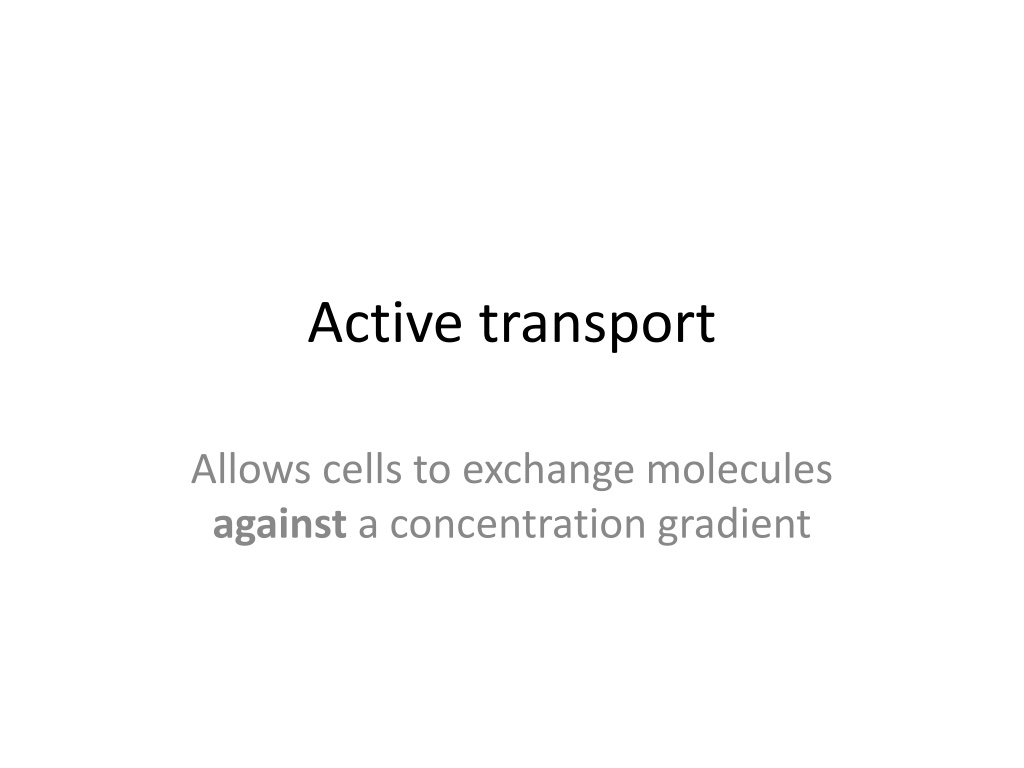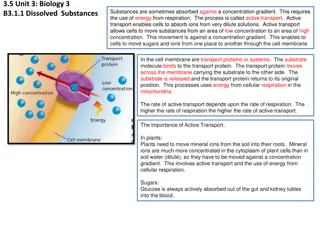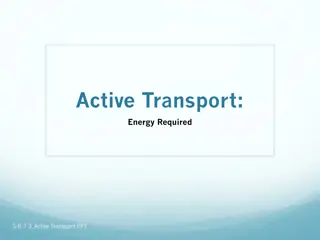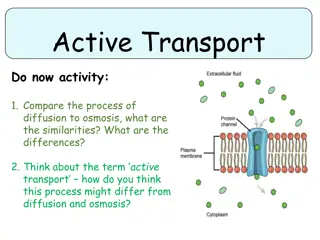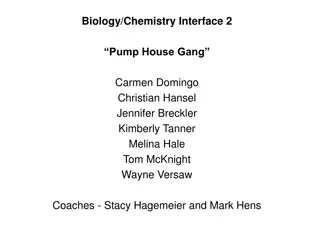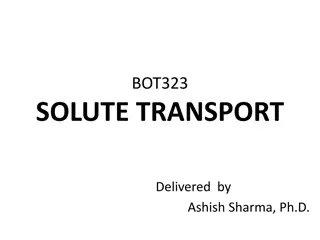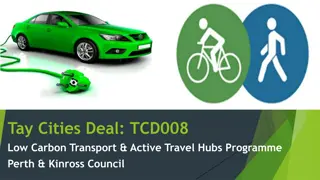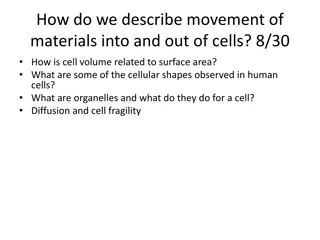Understanding Active Transport in Cells
Active transport allows cells to move molecules against their concentration gradients by using energy and carrier proteins. This process requires ATP, involves carrier proteins acting as pumps, and is selective in the molecules it transports. The Na+/K+ATPase pump is a key example of active transport found in neuron cell membranes. In the small intestine, active transport plays a vital role in absorbing nutrients like glucose efficiently.
Download Presentation

Please find below an Image/Link to download the presentation.
The content on the website is provided AS IS for your information and personal use only. It may not be sold, licensed, or shared on other websites without obtaining consent from the author. Download presentation by click this link. If you encounter any issues during the download, it is possible that the publisher has removed the file from their server.
E N D
Presentation Transcript
Active transport Allows cells to exchange molecules against a concentration gradient
Definition The movement of a molecule or ion against its concentration gradient i.e. from a low to a high concentration using energy and a carrier molecule.
Features of active transport It requires energy in the form of ATP Molecules or ions are moved against a concentration gradient Carrier proteins in the membrane act as pumps It is selective
How ATP is used ATP can be used in two ways during active transport: 1. Directly - to move molecules 2. Indirectly -to set up a concentration gradient of one molecule or ion which is then used to move another co-transport
How active transport happens http://www.youtube.com/watch?v=tNdBdodT JNs&feature=related Now write a flow chart to explain how direct active transport happens
The Na+/K+ATPase This is a type of pump which carries out active transport It is found mainly in the cell membrane of neurones It actively transports 3Na+ out of the cell and 2K+ into the cell and helps to establish the resting membrane potential of a neurone
Absorption in the small intestine How is the small intestine adapted to absorbing the products of digestion? Write two paragraphs to describe and explain how the small intestine is adapted to absorbing the products of digestion.
Active transport of glucose in the small intestine
How is glucose actively transported in the small intestine? 1. Na+ are transported out of the epithelial cells by the Na+/K+ ATPase into the blood 2. This results in a diffusion gradient for Na+ as there is a higher concentration of Na+ in the lumen of the small intestine compared to the inside of the epithelial cells 3. Na+ diffuse into the epithelial cells down their concentration gradient via a co-transport protein 4. Glucose molecules are also carried into the cell along with the Na+
5. Glucose then passes into the blood plasma by facilitated diffusion
Important points. Na+ diffuses down its concentration gradient Glucose moves against its concentration gradient Glucose therefore uses the Na+gradient to move against its concentration gradient an example of indirect active transport.
Prokaryotes Vs Eukaryotes Prokaryotic cells Eukaryotic cells Nucleus Nucleolus Genetic material Membrane bound organelles Chloroplasts Ribosomes ER, Golgi and lysosomes Cell wall
Cholera A disease caused by the bacterium Vibrio cholerae Transmitted by the ingestion of contaminated water and food Contamination is usually from faecal matter
How the cholera bacterium can cause disease . Most bacteria are killed by the acid in the stomach Any bacteria that do survive use their flagella to propel themselves through the mucus lining in the small intestine The bacteria begin to produce a toxin
Cholera toxin One part of the toxin binds to carbohydrate receptors on the cell membrane of the epithelial cells Another part enters the epithelial cell and opens CFTR
How the cholera bacterium can cause disease . Cl- then floods into the lumen of the small intestine lowering its water potential i.e. making it more negative Cl- loss from the epithelial cells raises their water potential i.e. makes it less negative Water flows by osmosis from the epithelial cells into the lumen of the small intestine Cl- diffuse from surrounding tissues, including the blood into the epithelial cells Water follows by osmosis .. Which leads to diarrhoea and dehydration
Damage to the epithelial cells lining the intestine.
Excessive secretion of water due to toxins, e.g. cholera toxin.
Causes of diarrhoea Damage to the epithelial cells lining the intestine Loss of microvilli due to toxins Excessive secretion of water due to toxins
Drinking water alone is no good as it does not replace the electrolytes (ions) that are being lost from the epithelial cells in the intestine.
Water and electrolytes can be replaced intravenously, but requires skilled medical worker.
Rehydration solution needs to contain; water, sodium, glucose, potassium and other electrolytes.
Oral rehydration therapy why are sodium and glucose included?
